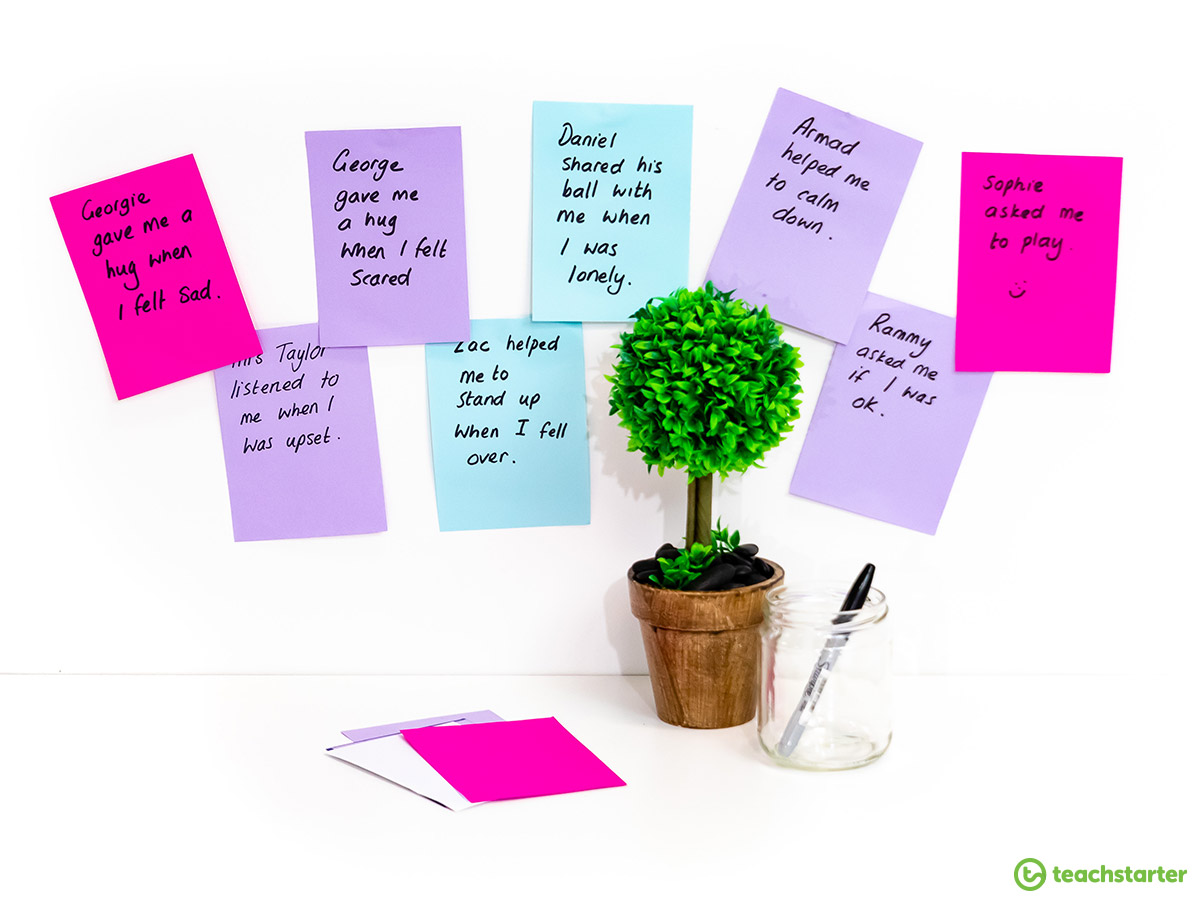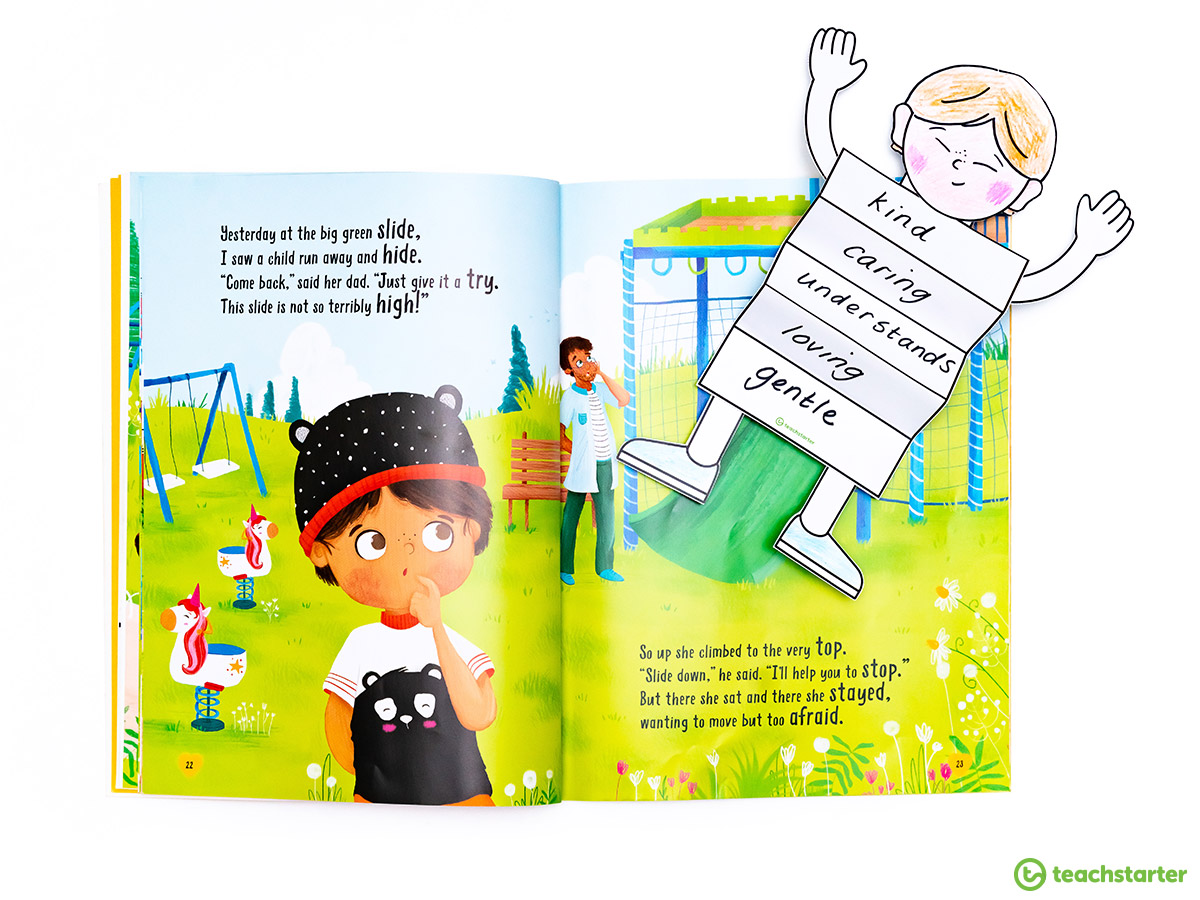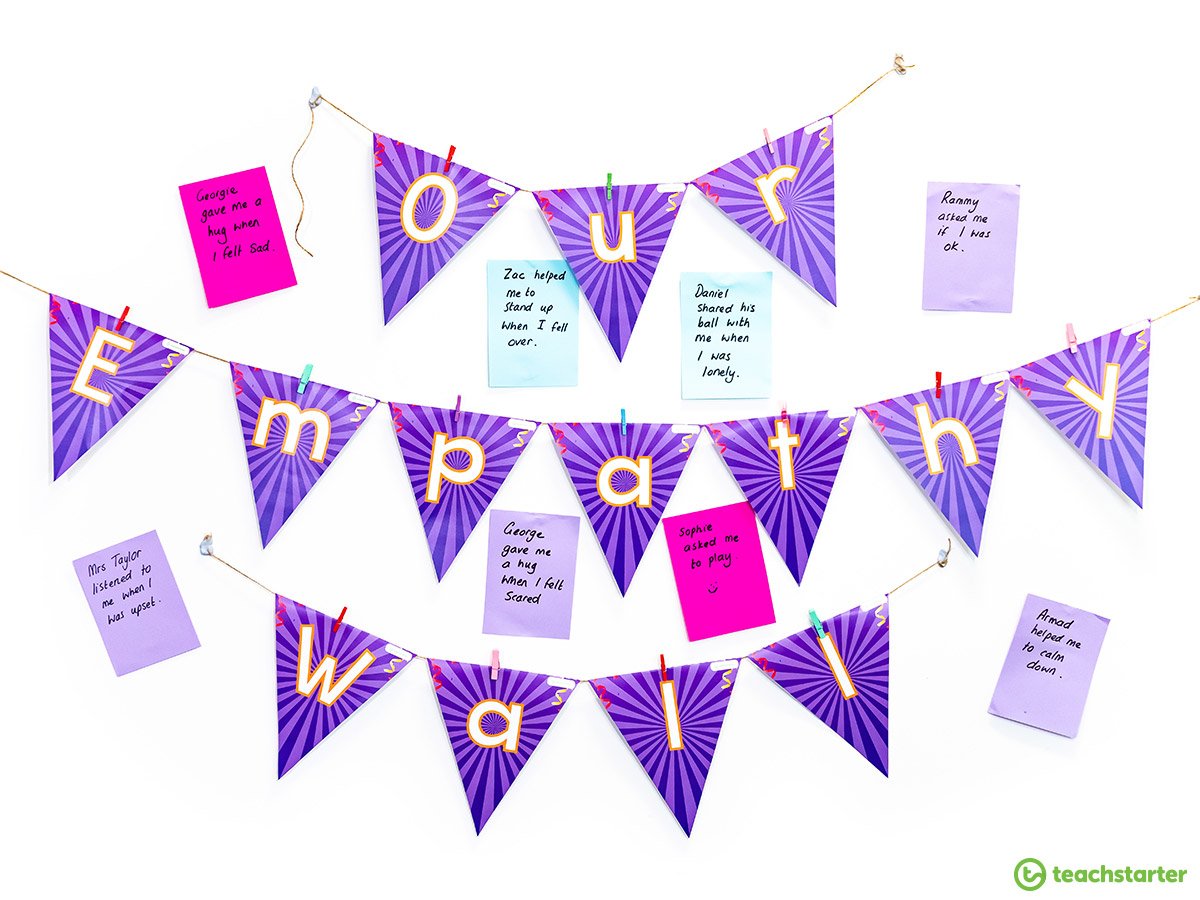Empathy is one of the most important social skills a child can learn. Empathy is the ability to share and understand other peoples feelings. By teaching empathy in the classroom students learn to understand one another and build friendships based on trust. Teaching empathy could be one of the answers to decreasing bullying.

The benefits of teaching empathy in the classroom include building positive classroom culture and strengthening the community. It also helps to prepare students to be leaders in their own communities.
There are three things that you can start to do right now to encourage your students to develop the skill of empathy:
- Model empathy – demonstrate to your students how to show understanding, compassion and kindness towards your students and colleagues.
- Listen actively to your students – fully concentrate and understand what is being said. Avoid passively listening while waiting for an opportunity to interject and speak.
- Teach empathy explicitly – set goals, share objectives and dedicate time to teaching and learning the skill of empathy.
Teaching Empathy with Quality Literature
You, Me And Empathy
Written by Janeen Sanders and illustrated by Sofia Cardoso

Ages: 3-9
Published Educate2empower Publishing
Paperback available Educate2empower Publishing
A great place to start when teaching empathy is to share literature. Knowing how time poor you are, I’ve done the research for you and found a children’s picture book that delivers a clear message and opens the door to engaging and meaningful learning experiences.
You, Me and Empathy, written by Jayneen Sanders is a charming story that uses verse, beautiful illustrations and a little person called Quinn to model the meaning of empathy. This picture book will expose your students to a range of social situations and will be a catalyst for rich classroom discussion related to characters and personal experiences.
Throughout the story, Quinn takes the reader on a journey of learning through the example of others, teaching children about empathy, feelings, kindness, compassion, tolerance, respect and recognizing bullying behaviours.
You, Me and Empathy Activity Ideas
Included in the book, You, Me and Empathy are thought-provoking discussion questions and engaging activities to promote empathy in your classroom. As you read the book to your class, take the time to read the questions, discuss them and reflect upon your students’ responses.
In addition to the ideas provided in the book, here’s another activity idea…
Create a Character Concertina for Quinn
Explore the character of Quinn in the story with our Character Adjective Concertina Template.
After enjoying a shared reading experience of You, Me and Empathy
- discuss how adjectives are used to give information about Quinn
- identify adjectives within the text
- brainstorm adjectives that describe your chosen character
- complete the steps to create a character concertina
- create a classroom display.
For more activity ideas to explore emotions, read Holly’s blog Teaching Emotions to Kids in the Classroom.
Teaching Empathy Through Journalling
Keeping an empathy journal is a great way to encourage your students to think about their actions and to develop the skill of empathy. Use a small exercise book or notebook and encourage your students to record times during the day that they have shown understanding, compassion and kindness towards others. I used our editable Gratitude Journal Book Cover to create an Empathy Journal Book cover.
Keeping an Empathy Journal is also a great opportunity for your students to reflect upon times when they did not show empathy and to consider how they might show more understanding in the future.
Be sure to model the process of identifying kindness and compassion and recording it. Do this by making observations throughout the day and stopping to acknowledge examples of empathy.
Here is an example of what this might look and sounds like…
“Let’s stop what we are doing to notice how Arnav is showing understanding and kindness to James. Arnav is helping James to find his homework folder because he knows how it feels to lose something important.”
Create Real-Life Empathy Opportunities
Our job is not only to teach the skill of empathy but also to create real-life opportunities for your students to use this important social skill. You don’t need to look much further than the classroom for opportunities to show understanding, compassion and kindness. You could also encourage volunteering in the local or wider community.
During my time as an upper years teacher, I found a huge benefit to including an Empathy Wall as part of my classroom displays. It’s a great way to promote empathy in the classroom and to acknowledge it when it’s happening.
I used our Let’s Celebrate – Bunting to create a bright and eye-catching display. The only other thing you need to do is provide some paper, pens and some Blue Tac and you’re off!

An Empathy Wall is one of those awesome ideas that grows over time, get more and more momentum and get big results. What’s more, it can have a very positive impact on increasing camaraderie and decreasing bullying in the classroom.
Spread the Act of Kindness
No act of kindness is ever too small. Spread the act of kindness and empathy in your classroom by making it one of your classroom goals and celebrating it.
Create a vibrant classroom display by using our Kindness Reflection Classroom Display. Acknowledge kindness and empathy by presenting your students with a Kindness Award Certificate.
[resource:4515479][resource:2697358][resource:2696762][resource:2713594]
For more tips and ideas on how to promote kindness and empathy in your classroom read Holly’s blog Spread Kindness in Your Classroom | Random Acts of Kindness Activities.









Comments